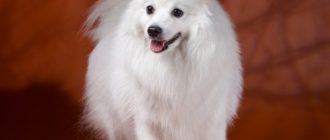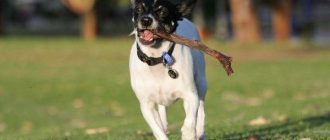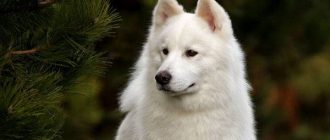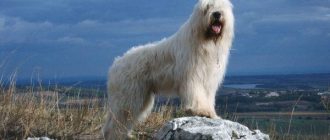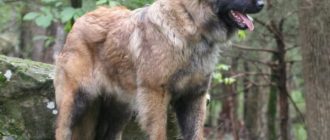Schipperke is a fairly rare breed of dog that combines decorative appearance, serious character and strength of the shepherd. The pet is perfect for people dreaming of a service dog, but the dimensions of such an animal stop making such a pet. The dog is compact, but, like all shepherd dogs, it requires attention, training and firm hands. What nuances do future owners need to know the “black devil”?
Content
- 1. The origin of the breed
- 2. Description of the Schipperke breed
- 2.1. Possible colors and coat quality
- 3. The nature and character traits of schipperke
- 4. Education and training schipperke
- 5. How to care for a four-legged friend?
- 6. Breed diseases
- 7. The regimen and diet of feeding
- 8. The conditions of detention of the “black devil”
- 9. Photo Schipperke
- 10. Video about shipperka
- 11. Puppy purchase: how to choose and where to buy
Origin of breed
Contents
- 1 Origin of breed
- 2 Schipperke breed description
- 3 Shipperke character and character
- 4 Education and training schipperke
- 5 How to care for a four-legged friend?
- 6 Breed diseases
- 7 The regimen and diet of feeding
- 8 The conditions of the “black devil”
- 9 Photo Schipperke
- 10 Schipper Video
- 11 Puppy purchase: how to choose and where to buy
At first glance, Schipperke seems to belong to the family Spitz, at least it pushes their neat outer view. However, in fact, the breed is a shepherd. In the archives Belgium has documents that mention these doggies, and they date back to the 16th century. 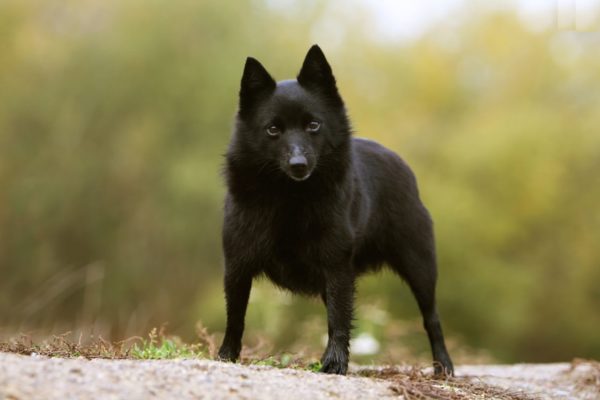
It was at this time that the French king issued a decree stating that breeding and keeping large dogs is a privilege of the nobility. BUT since Belgium was then under French rule, a document had power in its territory.
What then was the poor to do four-legged helpers? There is only one way out – to get a small dog, with character and abilities of big brothers. Became such a pet shepherd dog lueuvenar. Unfortunately, the breed has disappeared, but her representatives became the progenitors of modern schipperke.
The pet was multifunctional – he helped in grazing cattle, protected the home from uninvited guests and rodents, guarded. FROM 1960 began the history of improving the breed on the way to the official recognition. In 1882, Schipperke were recognized at home, and in 1888 the year its modern name was approved.
Schipperke breed description
Purebred Schipperke – a glorious, harmoniously folded doggie, possessing a dense fur coat. Under the wool, the body is downed, covered developed muscles. The backbone is light but the joints are good delivered. The muzzle is shorter than the cranial region, this gives the dog a pretty, attractive look. Males and females outwardly differ – both in size and in proportion.
The growth of the breed should not go beyond 25-33 cm, but also an important aspect is the mass and maintaining proportions. Dog weight varies from 3 up to 9 kg – more miniature doggies are not allowed for breeding, and heavier ones do not receive the highest exhibition score.
The standard schipperke is described as follows:
- The head is proportional in width and size, wedge-shaped, outwardly seems shortened. Forehead moderately wide, without excessive bulge, narrowing towards the eye arches, stop pronounced, smooth.
- The muzzle is neat, tapers noticeably to the nose, with a flat back nose. Moderately thick lips, cheeks and cheekbones moderately filled out.
- The teeth are often complete, with a scissor bite, but the standard allows for the absence of 1-2 premolars or second premolars, and the presence or absence of a third premolar in the assessment is not taken into account.
- The lobe is small, black, the nostrils are well open.
- Oval, almond-shaped eyes, saturated brown shade, with a natural sheen. A careful look wary. Eyelids tight, pigmented in black color.

- Ears are small, triangular, with with pointed tips, stand upright, sensitively react even to minor sounds.
- The format of the body is square, the neck is medium, wide, because of the plentiful coat it looks powerful. When the dog focuses, it becomes noticeable bending and scruff.
- Chest descends to the elbows, stiff ribs, rounded. Withers well developed, shortened back, decent width, goes down a line from the croup to the withers. Loin not goes beyond the line of the back, the croup is well-chosen, rounded.
- The limbs are proportional, stable, strong, the backbone is not heavy, the front ones stand exactly under the body, a little shorter than the rear. The hind limbs are also located under the body. The forelegs are slightly shorter than those on the hind legs. Fingers on vault type, tightly assembled. The claws are thick, bent, covered with black pigment.
- Puppies are born tailless, with a rudimentary tail or shortened. And in one litter there may be ragged kids. This is quite normal, and any The tail is standard. Also at the request of the owner this part, if any, can be stopped.
Possible colors and coat quality
The coat is two-layer, with a stiff, long spine and thick, dense, soft undercoat. In the area of the head, ears and limbs, woolly the cover is shorter, on the hips of the hind legs it forms panties, on the neck – a luxurious mane, which turns into a frill.
Sheperke has one color – plain black, undercoat shade may be slightly lighter, but it is not visible under the awn layer.
Shipperke character and character
Modern Schipperke is a family pet that is both companion and protector. The representative of the breed is curious, energetic and cheerful. He is always in motion, is interested everyone around and loves to explore new places.
Such a restless pet needs frequent, long walking to get rid of excess energy. Otherwise he will lead too active in the home environment – tirelessly rushing about, get attached to households and guests, get underfoot. Schipperke – a great traveler, especially he likes trips to car, during which the doggie can look out the window.
A pet can play and frolic for hours, so it’s A good option for families with children. But peace and quiet will have to forget – the company will be restless. Also, he doesn’t get along with very young children – their negligence can cause pet irritation.
The modest size of the dog does not prevent her from being bold, strong, fearless. If required, she will enter the battle with the enemy, which has a much larger size. But an ill-mannered dog can cause problems – he is able to show aggression, even in relation to the owner. And here it becomes clear why Schipperke is called the “black devil.”
Representatives of this breed are very vigilant, not a single stranger the sound will not go unnoticed. The pet will notify about them sonorous, loud barking that can grow into a long trill. This kind of behavior may not be to the liking of the owners themselves, so to the neighbors. Similar behavior is subject to correction, trained doggie is able to quickly shut up when he heard a certain command.
Education and training schipperke
The owners of these “black rage” claim that by nature dogs are very similar not to shepherd dogs – they quickly learn commands and usually in a short time turn into educated pets. But with provided that the owner pays due attention to education and training a four-legged friend. Dogs of this breed possess high intelligence, they can assimilate both the basic program, so and more complicated tricks.
When teaching a person it is important to choose the right tactic – you can’t be too rude, but you shouldn’t let your pet prank. If a the pet will detect weakness at least once, it will be time after time Test the patience of the trainer, trying to dominate. Master must prove his leadership, otherwise this place will take self-confident doggie. 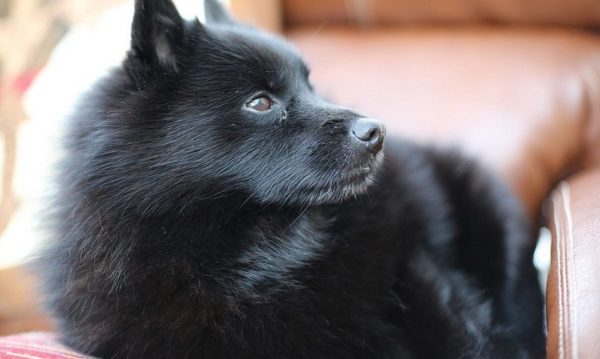
Classes should be regular, consistent, varied. Doggie really likes classes that are held in game form. The owner needs to be persistent and consider pedigree features. Beginners may have difficulty in this case, you should seek the advice of professionals.
How to care for a four-legged friend?
Schipperke is very neat, therefore pet care is not will require a lot of time. His copious coat should be combed out. 2-3 times a week, and during seasonal links the procedure will have to spend daily. The change of wool is very intense, and a faded dog becomes the owner of a short fur coat. Him luxurious coat is restored within a few months.
The rest of the care includes standard procedures:
- Inspection of the eyes and ears – if the eyes “sour” them washed with chamomile broth or a special lotion, from the ears excess sulfur and dirt are removed with a cotton swab dipped in boiled water or antiseptic. Similar actions help to avoid the occurrence and spread of infections and inflammation.
- Teeth – it is recommended to clean them twice in week and give your pet dentological goodies to rule out development of tartar. To brush your teeth you should teach your pet puppyhood, then, having matured, he will be calm to perceive an unpleasant procedure for him.
- Paws – pads should be regularly inspect, cut nails as they grow, using claw cutter.
Breed diseases
Schipperke have quite good health, but they can the development of diseases, especially of hereditary origin. Often in doggies, the following pathologies are revealed:
- epilepsy
- diseases of the organs of vision – cataracts, retinal atrophy;
- hypothyroidism – occurs with a deficiency of thyroid hormones glands;
- hip dysplasia;
- Perthes syndrome
- mucopolysaccharidosis.
Subject to regular preventive examinations, proper care, timely vaccination, the pet will live at least 13-15 years old.
The regimen and diet of feeding
Representatives of the breed are unpretentious in food, so the pet does not will require any special treats and will not sit over a bowl in waiting for something tastier. The diet may be monotonous, but necessarily balanced and nutritious.
With natural feeding, the dog should get enough meat – beef, veal, turkey, chicken, but also on the menu cereals, offal, vegetables, fruits. A couple of times a week the dog can give kefir, yogurt, cottage cheese, boiled eggs, sea fish. Porridge it is recommended to season with a spoon of vegetable oil, add chopped fresh herbs. It is also permissible to cook cereals on milk. 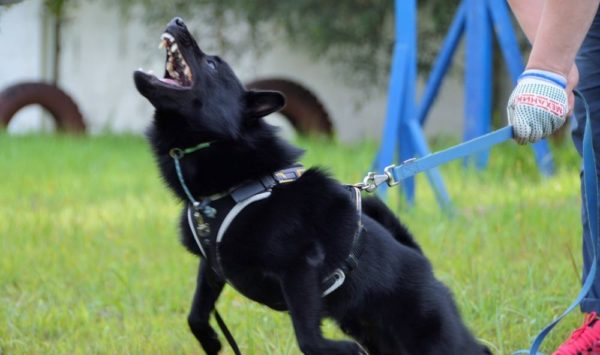
Natural feeding involves inclusion in the diet additional vitamin and mineral supplements. About this question you can consult a veterinarian who will pick up the most effective complex of vitamins in accordance with age and diet.
In addition to the “natural”, Schipperke is often fed industrial rations. It is advisable to select the product individually, based on pet needs. It must be high quality and fit for a small, mobile doggie. In this case, you can periodically treat canned goods of the same brand, but vitamins and feeding is not required.
The conditions of the “black devil”
First of all, it should be noted that the classical scheme keeping the dog – two 15-20 minute walks and finding a pet in 4 walls alone, a schipperka is not suitable. Under stress regular workout will be a way out short walks will be enough for your pet.
It is enough to take the pet to the site a couple of times a week, but also he will not refuse more frequent occupations. The dogs survived hunting instinct, they can drive small animals, so on it is desirable to keep the dog on a leash.
Schipperke can live both on the street, in the aviary, and in the house or apartment. But with street maintenance, the pet will not be enough communication and attention from the owners. In addition, these fidgets are prone to shoots, sometimes even a high fence does not prevent them from slipping out.
When providing the dog with the necessary physical load of problems during his time in the house will not be. He is capable of harmoniously fit into the way of the family, but still brings in his adjustments.
Photo Schipperke 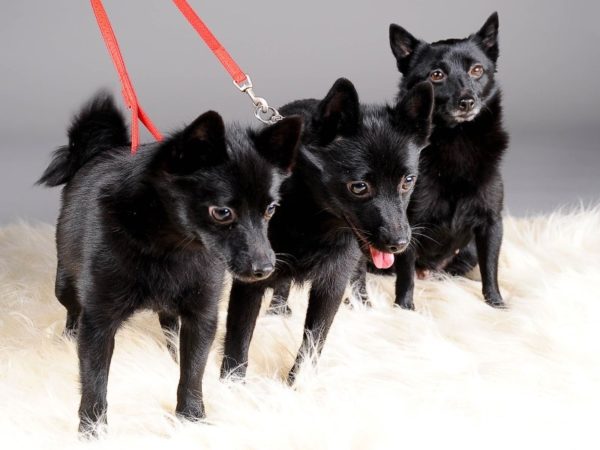

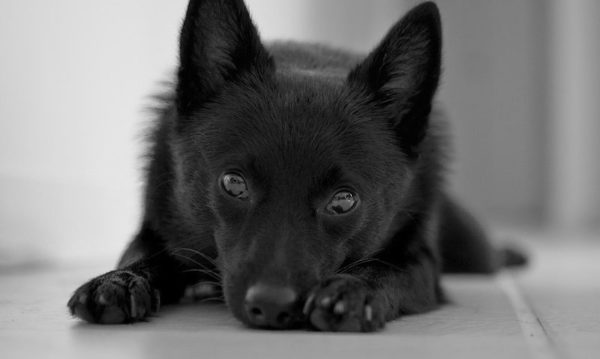

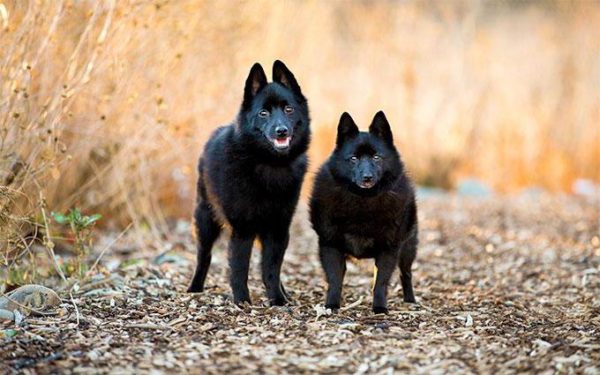
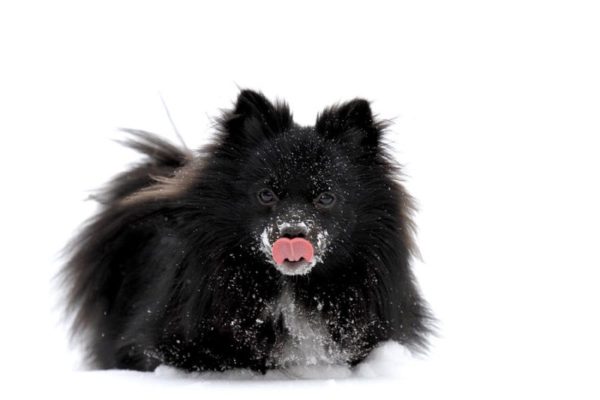
Schipper Video
Puppy purchase: how to choose and where to buy
Although the breed is on the rise stage, it is still rare in Russia. However, every year everything becomes more nurseries and breeders involved in breeding these original dogs. In Moscow there is 1 nursery “Schipperke” http://schipperke-dog.ru/kontakty.html, where you can buy purebred puppy.
Naturally, low prevalence affects the price of puppies, and she is tall enough. In a specialized nursery, the price tag is higher, private sellers – below. It is important that the baby from birth lived in good conditions and from the first weeks got acquainted with the rules etiquette, chatted with people. Similar very early socialization it is necessary that the dog can later adapt to life in house of the new owners and succumbed to education and training.
Therefore, it is recommended to buy a pet from experienced sellers, that properly contain dogs. The puppy must have a passport, pedigree and vaccinations. It will not be amiss to make sure that the parents of the baby do not have any hereditary diseases.
Starting price for a pet puppy from a kennel not suitable for exhibition career and breeding, is at least 30,000 rubles. For the kid of the class with a good pedigree, admitted to the planned mating, you have to pay 40,000-60000 rubles. Puppy with excellent data from titled parents who are predicted to succeed a career can cost a lot more – from 70,000 rubles.
Schipperke is a real shepherd, only mini, therefore it requires serious approach. Dog handlers do not recommend starting such four-legged people with no experience in education and training Shepherd dogs, time for work with a dog and wanting a pet in the evening dozed at the TV.
This doggie is 100% justified by its nickname – “black the devil, “and the owners agree that sometimes a pet happens “too much”. He will wish to participate in all the affairs of his family. and will not miss a single event. This is not just a pet and a companion, friend and true family member.

